Fuel Tank Replacement 2-Door Utility
Removal Procedure
- Disconnect the negative battery cable.
- Drain the fuel from the tank. Refer to Fuel Tank Draining .
- Raise the vehicle. Refer to Lifting and Jacking the Vehicle in General Information.
- Remove the left rear splash shield.
- Loosen the fuel fill hose clamp (2) and the vent hose clamp (1) at the fuel tank.
- Disconnect the fuel fill hose and the vent hose from the fuel tank.
- Remove the fuel tank shield.
- Support the fuel tank.
- Remove the fuel tank straps.
- Lower the fuel tank.
- Disconnect the fuel pressure sensor and the fuel sender electrical connectors.
- Disconnect the fuel feed pipe, the fuel return pipe, and the evaporative emission (EVAP) pipe at the fuel sender.
- Remove the fuel tank from the vehicle.
- Remove the fuel sender from the fuel tank. Refer to Fuel Sender Assembly Replacement .
Caution: Unless directed otherwise, the ignition and start switch must be in the OFF or LOCK position, and all electrical loads must be OFF before servicing any electrical component. Disconnect the negative battery cable to prevent an electrical spark should a tool or equipment come in contact with an exposed electrical terminal. Failure to follow these precautions may result in personal injury and/or damage to the vehicle or its components.

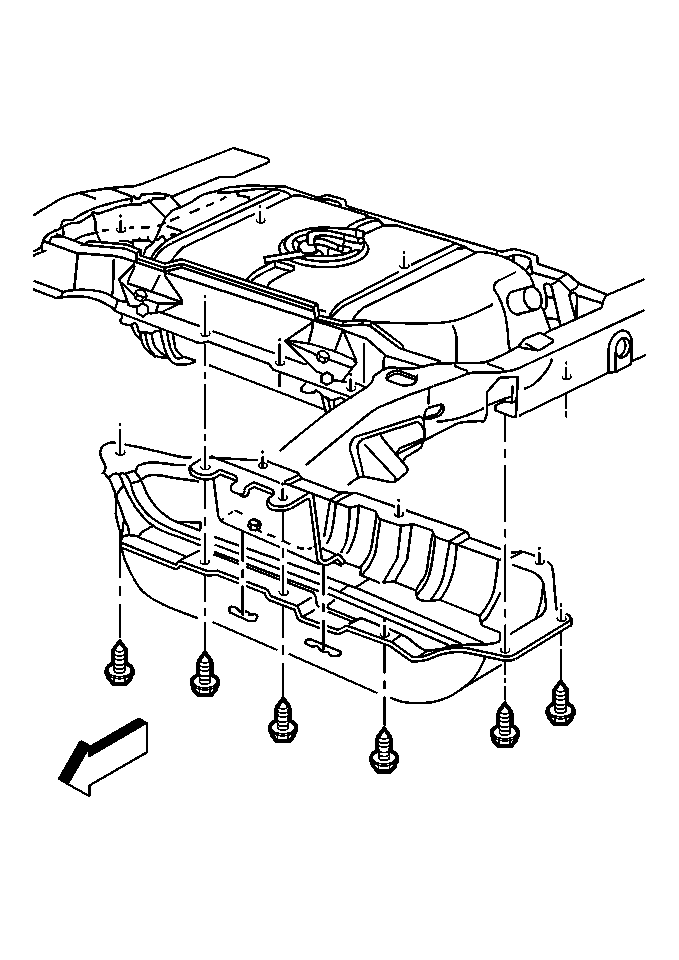
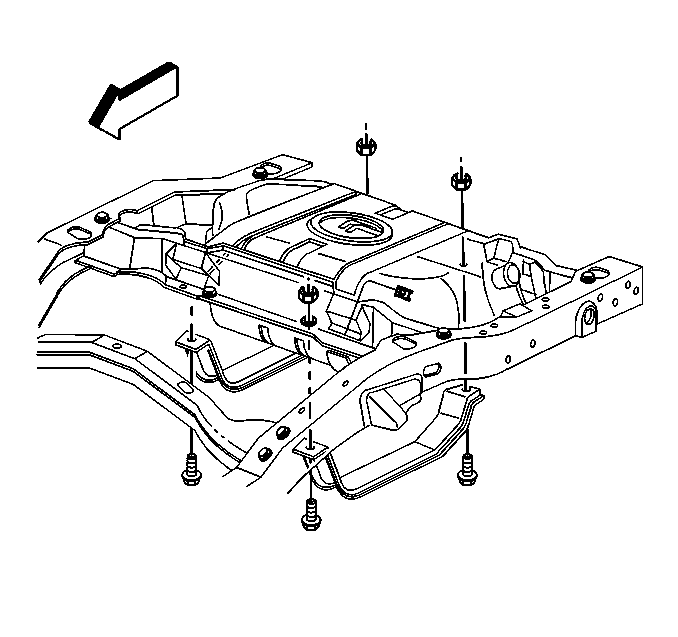
Notice: Use extreme care when lowering the fuel tank. The fuel sender is made of plastic. Lowering the fuel tank may damage the fuel sender.
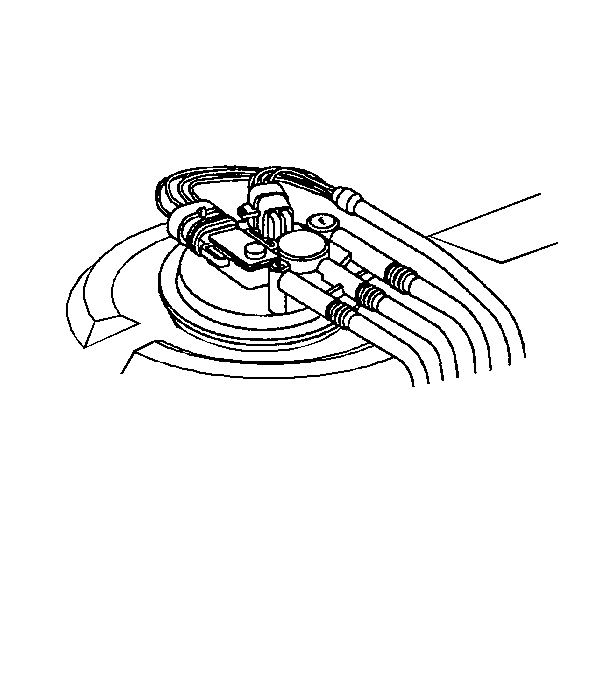

Installation Procedure
- Install the fuel sender into the fuel tank. Refer to Fuel Sender Assembly Replacement .
- Install the fuel tank insulators.
- With the aid of an assistant, position and support the fuel tank.
- Raise the fuel tank.
- Connect the fuel feed pipe, the fuel return pipe, and the EVAP pipe at the fuel sender.
- Connect the fuel pressure sensor and the fuel sender electrical connectors.
- Install the fuel tank straps.
- Connect the fuel fill hose (2) and the vent hose (1) to the fuel tank.
- Install the left splash shield.
- Install the fuel tank shield.
- Lower the vehicle.
- Refill the fuel tank.
- Install the fuel tank filler cap.
- Connect the negative battery cable.
- Inspect for leaks.




Notice: Use the correct fastener in the correct location. Replacement fasteners must be the correct part number for that application. Fasteners requiring replacement or fasteners requiring the use of thread locking compound or sealant are identified in the service procedure. Do not use paints, lubricants, or corrosion inhibitors on fasteners or fastener joint surfaces unless specified. These coatings affect fastener torque and joint clamping force and may damage the fastener. Use the correct tightening sequence and specifications when installing fasteners in order to avoid damage to parts and systems.
Important: When removing or replacing the fuel tank, the fuel tank support fasteners should never be reused. Always use new fasteners when installing the fuel tank.
Tighten
Tighten the fuel tank strap nuts to 91 N·m (67 lb ft).

Tighten
| • | Tighten the fuel fill hose clamp to 2.5 N·m (22 lb in). |
| • | Tighten the vent hose clamp to 1.7 N·m (15 lb in). |

Tighten
Tighten the fuel tank shield bolts to 11 N·m (97 lb
in).
| 15.1. | Turn ON the ignition for 2 seconds. |
| 15.2. | Turn OFF the ignition for 10 seconds. |
| 15.3. | Turn ON the ignition. |
| 15.4. | Inspect for fuel leaks. |
Fuel Tank Replacement 4-Door Utility
Removal Procedure
- Drain the fuel from the tank. Refer to Fuel Tank Draining .
- If applicable remove the fuel tank shield (2).
- Loosen the fuel fill hose clamp (3) at the fuel tank (1).
- Disconnect the lower fuel fill hose (2) from the fuel tank (1).
- Disconnect the vent hoses from the fuel limiter vent valve.
- Disconnect the vent hose from the rollover valve at the front of the fuel tank.
- Disconnect the fuel pressure sensor and the fuel sender harness connectors (2, 3) from the fuel sender (1).
- Disconnect the fuel feed, return, and EVAP purge pipes (2, 3, 4), at the fuel sender. Refer to Plastic Collar Quick Connect Fitting Service .
- Support the fuel tank.
- Remove the fuel tank straps (1).
- Remove the fuel tank and place in a suitable work area.
- Remove the fuel sender from the fuel tank. Refer to Fuel Sender Assembly Replacement .
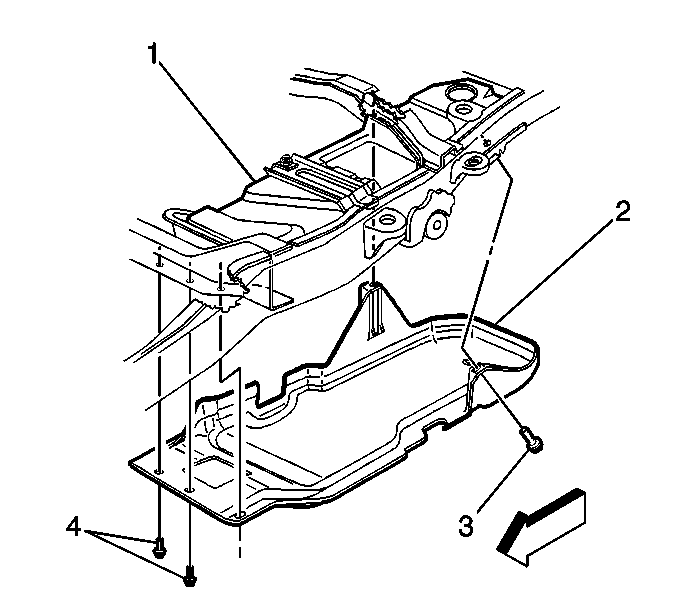
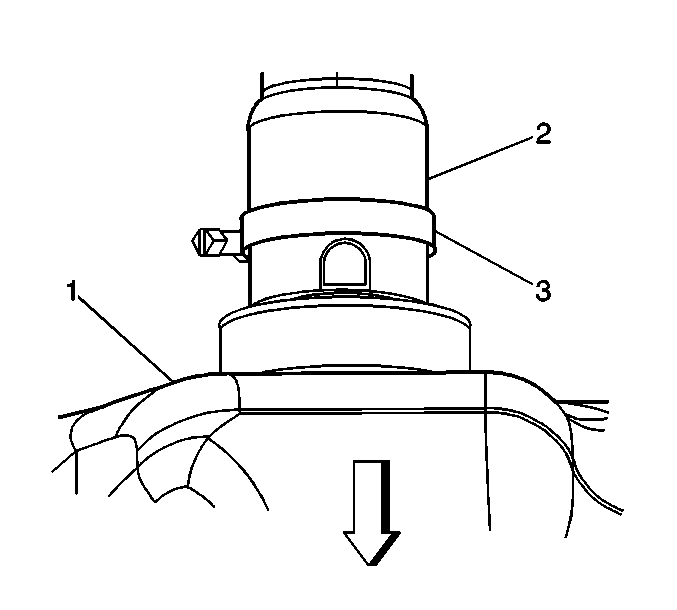
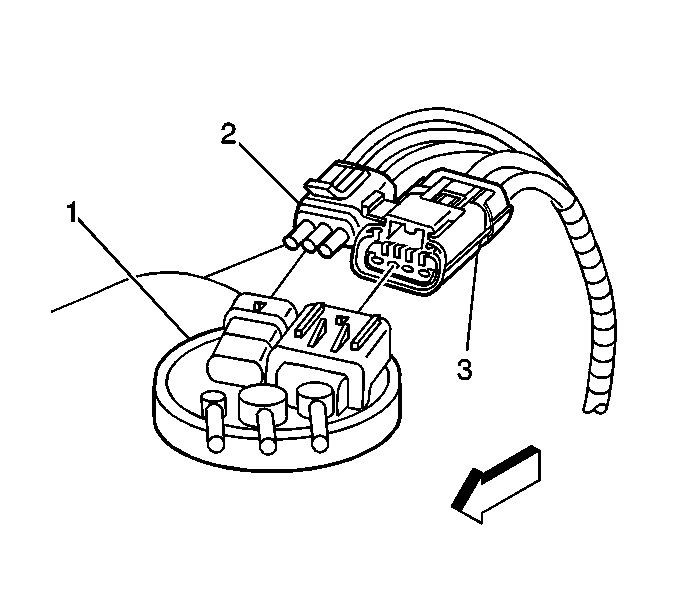
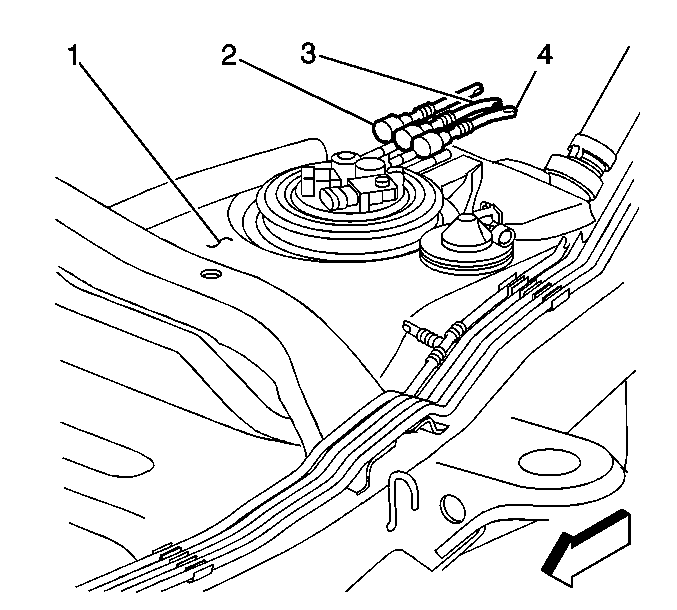
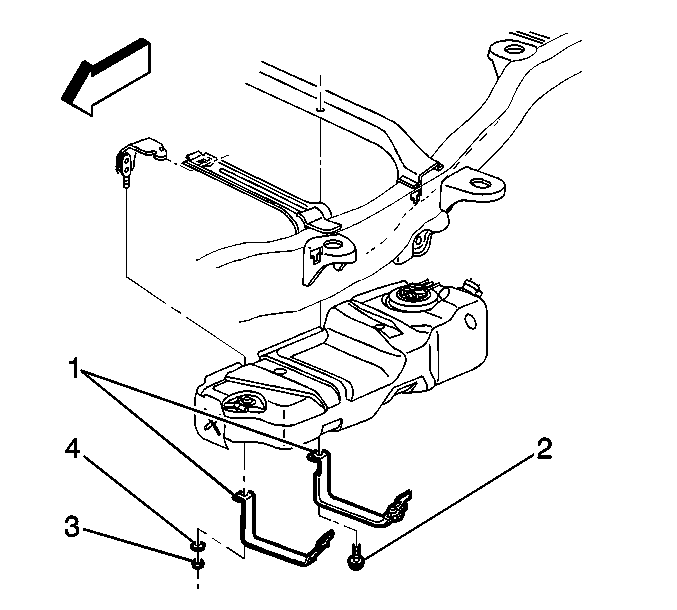
Installation Procedure
- Install the fuel sender into the fuel tank. Refer to Fuel Sender Assembly Replacement .
- Install the fuel tank insulators.
- With the aid of an assistant, position and support the fuel tank.
- Install the fuel tank straps (1).
- Connect the fuel feed, return, and EVAP purge pipes (2, 3, 4) at the fuel sender. Refer to Plastic Collar Quick Connect Fitting Service .
- Connect the fuel pressure sensor and the fuel sender harness connectors (2, 3) to the fuel sender (1).
- Connect the vent hose to the rollover valve at the front of the fuel tank.
- Connect the vent hoses to the fuel limiter vent valve.
- Connect the lower fuel fill hose (13) to the fuel tank and lower fuel fill tube (12).
- Install the fuel tank shield (2).
- Lower the vehicle.
- Remove the fuel fill cap and refill the fuel tank.
- Install the fuel tank filler cap.
- Connect the negative battery cable.
- Inspect for leaks using the following procedure:

Notice: Tighten the strap fasteners by steps, alternating between the fasteners, until the specified torque is reached. A failure to tighten the strap fasteners as specified will cause the bottom of the tank to flex upward. This will result in the fuel gauge indicating that there is fuel remaining in the tank when the tank is empty.
Notice: Use the correct fastener in the correct location. Replacement fasteners must be the correct part number for that application. Fasteners requiring replacement or fasteners requiring the use of thread locking compound or sealant are identified in the service procedure. Do not use paints, lubricants, or corrosion inhibitors on fasteners or fastener joint surfaces unless specified. These coatings affect fastener torque and joint clamping force and may damage the fastener. Use the correct tightening sequence and specifications when installing fasteners in order to avoid damage to parts and systems.
Tighten
| • | Tighten the fuel tank strap nut (3) to 18 N·m (13 lb ft). |
| • | Tighten the fuel tank strap bolt (2) to 18 N·m (13 lb ft). |


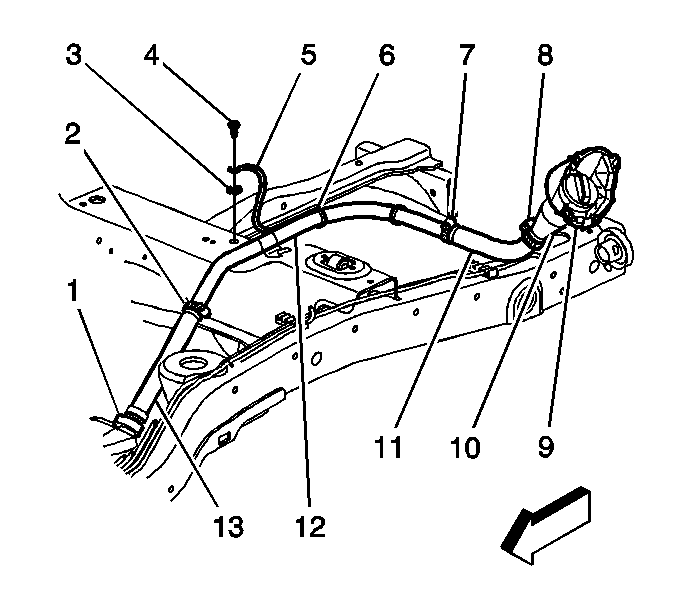
Tighten
Tighten the fuel fill hose clamps (1, 2) to 2.5 N·m (22 lb in).

Tighten
Tighten the fuel tank shield bolts (3, 4) to 33 N·m (24 lb
ft).
| 15.1. | Turn ON the ignition, with the engine OFF for 2 seconds. |
| 15.2. | Turn OFF the ignition for 10 seconds. |
| 15.3. | Turn ON the ignition, with the engine OFF. |
| 15.4. | Inspect for fuel leaks. |
